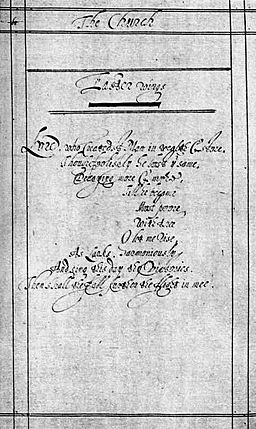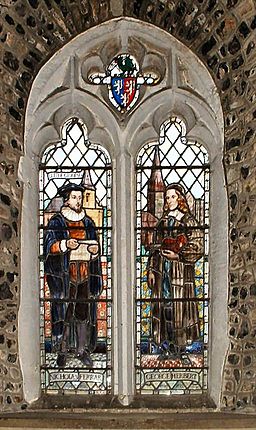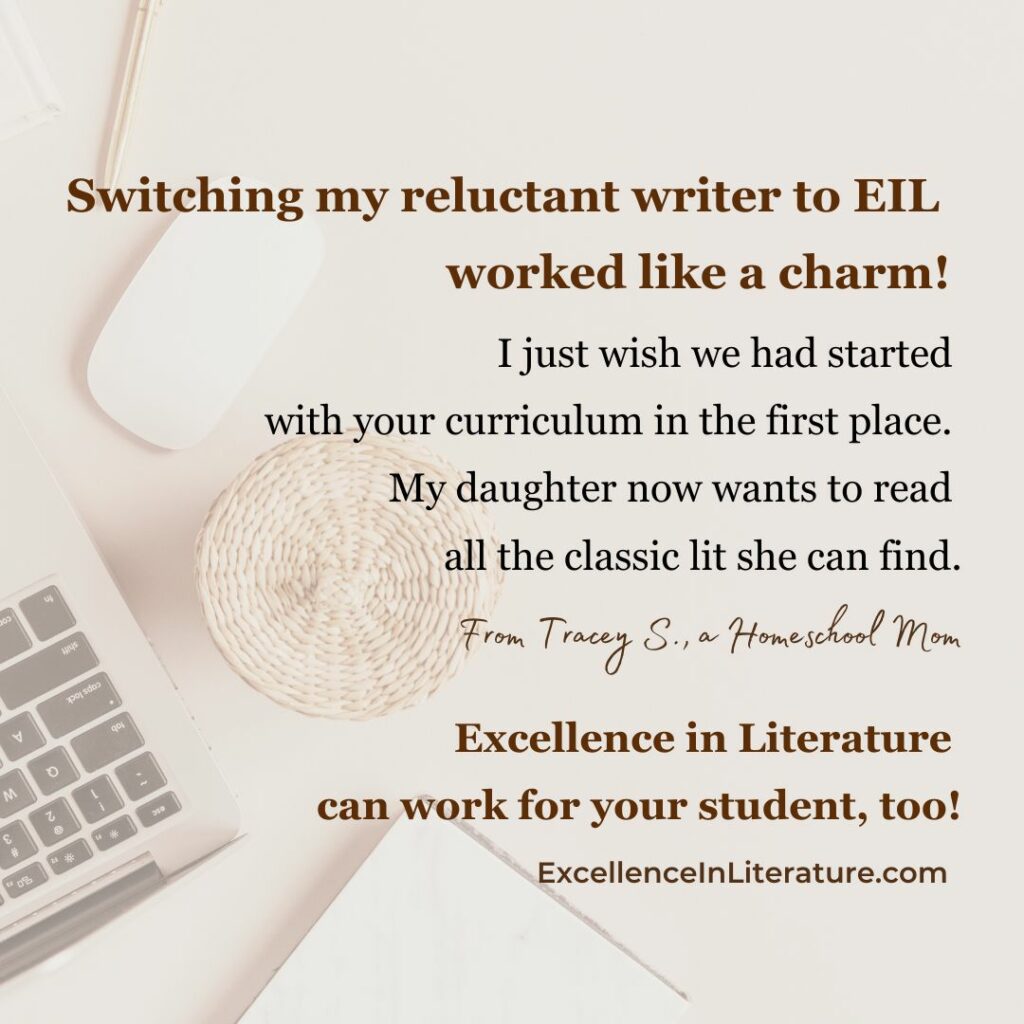Easter Wings: A Poem for Spring
Springtime puts me into a poetic frame of mind, so by the time April arrives — it’s Poetry Month, you know — I have a stack of poetry by my chair and favorite lines running through my head. Most of the poems that have stuck with me were poems I learned when young. It’s so much easier then, which is why poetry should be part of every family’s week. I’ll get to a few ideas for making that happen in the next post, but for now, here is one of George Herbert’s most creative and beautiful poems, “Easter Wings.”
“Easter Wings” by George Herbert
Because “Easter Wings” is a shape poem, and I’m not sure that the formatting will be preserved on different devices, take a look at the image above to see how the poem was presented when originally published in The Temple, a 1633 collection of Herbert’s poetry. The type was set sideways on two pages, creating the shape of wings. Most modern poetry anthologies publish it on a single page, but you can still see the wing shape if you turn the book sideways.
Lord, who createdst man in wealth and store,
…Though foolishly he lost the same,
……Decaying more and more,
………Till he became
…………Most poore:
…………With thee
………O let me rise
……As larks, harmoniously,
…And sing this day thy victories:
Then shall the fall further the flight in me.
My tender age in sorrow did beginne
…And still with sicknesses and shame.
……Thou didst so punish sinne,
………That I became
…………Most thinne.
…………With thee
………Let me combine,
……And feel thy victorie:
…For, if I imp my wing on thine,
Affliction shall advance the flight in me.
What does it mean?
 Herbert’s poetry is dense with meaning, and because he was writing in the 17th century, the spelling and mode of expression can be unexpected to modern eyes. To help you understand the poem, I’m going to add in the explication from Joseph Womack’s excellent book, Working it Out: Growing Spiritually with the Poetry of George Herbert. I like his way of approaching poetry, beginning with a big-picture view, then looking at the parts, and finally, putting it back together to fully understand the beauty and meaning of the poem. It’s a wonderful way to begin to understand poetry if you’re not confident in reading it.
Herbert’s poetry is dense with meaning, and because he was writing in the 17th century, the spelling and mode of expression can be unexpected to modern eyes. To help you understand the poem, I’m going to add in the explication from Joseph Womack’s excellent book, Working it Out: Growing Spiritually with the Poetry of George Herbert. I like his way of approaching poetry, beginning with a big-picture view, then looking at the parts, and finally, putting it back together to fully understand the beauty and meaning of the poem. It’s a wonderful way to begin to understand poetry if you’re not confident in reading it.
The Big Picture
This poem is a prayer containing assorted elements: praise, confession, petition, admission of defeat, and anticipation of victory. It is a prayer about the general state of mankind and the particular state of the speaker. It is a prayer that sees the whole of Christian life as it deals with loss, decay, affliction, descent, sorrow, and sin alongside harmony, victory, ascent, advancement, and dependence. Above all, it is a petition to partake in the power of Easter wings to give flight to the fallen.
The Parts of the Picture
This is a pattern poem in that its shape reflects aspects of its meaning. The shape of the lines are like the movement of wings in flight and reflect the fall and rise of the lark’s flight and also of the fall of man and the rise of the Easter event.Stanza 1. Here the subject is mankind and the fall. After the descent from the creation through the fall to “most poor” at the mid-point of the stanza in line 5, the thoughts ascend with the speaker’s petition to rise victoriously with the Lord on Easter. Finally, the opposites of fall and flight are united and reconciled as the stanza closes.
Stanza 2. The focus shifts to the particular situation of the speaker as sin and punishment diminish him to “most thin” in line 15. At that point, as at the mid-point in stanza 1, the lines begin to expand with the speaker’s petition to combine with the Lord in victory “this day.” And as in the last line of stanza 1, opposites (affliction and advancement) are united and reconciled at the fullest point of expansion. Biblical allusions. In the speaker’s petitioning of the Lord for a renewal of strength, there are two possible biblical allusions: Isaiah 40:31 and Malachi 4:2.
Rhyme Scheme. This is used both to divide thought within each stanza and to intertwine the two stanzas. First, the rhyme schemes reflect the subdivisions within the stanzas: ababa, cdcdc, for stanza 1 and ebebe, cfcfc, for stanza 2. Secondly, the rhyme schemes connect the two stanzas. There are interlocking rhymes in lines 2 and 12, 4 and 14, 6 and 16, 8 and 18, and 10 and 20. This interlocking by rhyme is re-enforced in three of these cases by a repetition of the same words: “became” in lines 4 and 14; “thee” in lines 6 and 16; and “me” in lines 10 and 20.
The Parts of the Picture Come Together
In the Easter event, God moved dramatically from negative to positive, from death to life. Note this movement in the poem. Each stanza compresses in shape as it descends in spirit and then expands and rises. Mankind loses (line 2) but God’s power can raise him to victory (lines 7 and 9). The poet is impoverished (line 15) but also knows the power of combining with Christ’s wing (line 19). This movement is portrayed boldly in the climactic last lines of each stanza with “fall” furthering “flight” (line 10) and “affliction” advancing “flight” (line 20).
For the speaker of this poem, Easter is much more than an event in the past. It is even more than the celebration of such an event. As indicated by the prominence of the petitions in lines 6-10 and 16-20 (half of the poem is petition), the speaker desires for himself the power of the Easter experience. At the heart of the prayer, therefore, is a petition for a personal Easter event to “sing this day” (line 9) and to “feel this day” (line 18). The speaker knows decay (line 3) and poverty (line 5); but he desires flight (lines 7 and 10), song (line 9), and victory (line 9). He knows sorrow, sickness, shame (lines 11 and 12), and frailty (line 15); but he desires to combine with Christ (lines 16-17) and feel His victory (line 18).
What is the way to this victory? The victories pronounced in lines 9 and 18 are Christ’s, the victory of Easter. The way to victory, therefore, is to combine with Christ (lines 16-18). This union is portrayed vividly in line 19—“If I imp my wing on thine.” To “imp” is to repair a damaged wing by engrafting feathers onto it. In short, the speaker’s brokenness can be made whole in his union with Christ who engrafts the power of Easter wings. This “combining” with Christ comes to a climax in the last line of the poem. Affliction, the speaker says, can advance his flight. Not only can his afflictions do this, but, more importantly, Christ’s can. And even more importantly, the combination of the two afflictions is the key to the flight of Easter wings. For the speaker, therefore, in a most personal way, the power of Easter triumphantly unites the opposites of affliction and flight as it brings forth newness of life. And in a most personal way, the speaker petitions God to partake in this resurrection power.
In Working it Out, this portion of the poem’s explication is followed by a bit of commentary, and some questions and scripture references for reflection, but the portion excerpted above should be enough to help you understand the poem.
Who is George Herbert?
George Herbert (1593–1633) was a Welsh-born poet, orator, and Anglican priest. Herbert wrote in English, Latin, and Greek, and his work is associated with the writings of the metaphysical poets. His religious poems are characterized by precision of language, metrical versatility, and an ingenious use of imagery. Over ninety of his poems have been set to music, some as hymns that still remain popular. As a priest, Herbert was noted for unfailing care for his parishioners, bringing the sacraments to them when they were ill, and providing food and clothing for those in need. Never a healthy man, he died of consumption at 39.(Adapted from Wikipedia.)Five Mystical Songs
Composer Ralph Vaughan Williams set five of George Herbert’s poems to music — not “Easter Wings,” but another poem titled “Easter,” along with “I Got Me Flowers,” “Love Bade Me Welcome,” “The Call,” and “Antiphon.” Here is a performance by the Men and Boys Choir of St. Matthew’s Church.
In the next post, I’ll write about enjoying a poem every week, including how to choose and memorize those you love. In the meantime, may you have a beautiful spring.


















